Whether you buy your lemons from the market or have your own lemon tree, learning how to make fermented lemons is a great way to preserve them for months. This recipe is easy, straightforward and foolproof. All you need are lemons, salt, and time. Use your preserved lemons in salad dressings, stews, and marinades. Best of all, you’re using the entire lemon, peel and all.

Table of Contents
Preserved lemons have a rich history rooted in North African and Middle Eastern culinary traditions. The practice of preserving whole lemons originated in Morocco. Historically, they were used extensively in Moroccan cuisine, especially in tagines, stews, and couscous dishes.
The intense and unique flavor they bring, combining the tartness of the lemons with the complexity of fermentation, became a signature element of Moroccan culinary identity.
The technique of preserving lemons in salt made its way to the Levant (bilad al sham) and found its way into traditional Levantine dishes. It is used in salads, marinades and stews to impart a deep lemon flavor. The best time to make this recipe is during citrus season, but these days, fresh lemons are grown and available year round.
A Note on Lacto-Fermentation
Fermentation (more precisely lacto-fermentation or lactic acid fermentation) involves submerging vegetables and/or fruits in a brine solution (salt and water). In this case, we are salting the lemons and they will release their own water to create the brine.
Rather than killing bacteria (like pickling does), this process takes a different approach. When done correctly, fermentation kills or suppresses the bad bacteria while giving the beneficial bacteria a chance to thrive. This fermentation process transforms fruit into healthy lacto-fermented food with beneficial probiotics.
I suggest you read my comprehensive post on lacto-fermentation, especially if you are a beginner or this is your first-time fermenting. It’ll give you all the basics you need to confidently ferment all the vegetables!
Ingredients
This traditional recipe comes together with very few ingredients.

- Lemons: When choosing lemons, use fresh, unblemished fruits. Organic lemons are preferred but not mandatory. If you have access to Meyer Lemons, use those! The same recipe can be used to ferment limes and other citrus.
- Salt: Not all salts are equal. When fermenting, I recommend using sea salt, kosher salt or pickling salt. Don’t use table salt as it has iodine added to it.
- Spices: You don’t need to use spices. The choice is yours. I like using bay leaves and black peppercorns, but you can also use a cinnamon stick and star anise. Choose complementary spices.
See the recipe card for full information on ingredients and quantities.
How to Make this Preserved Lemon Recipe
Even though this is a pretty easy recipe, I recommend you read through all the steps before starting.

Step 1. Trim the ends. Using a sharp knife, trim both ends of the cleaned lemons.

Step 2. Cut the lemons. Cut an X in each lemon without going all the way through.

Step 3. Sprinkle salt on lemons. Sprinkle about 1-2 teaspoons of salt on each lemon, making sure to rub the salt in the opening.

Step 4. Pack the jar. To a clean quart jar, add 2 teaspoons of salt and spices if using. Start packing the salted lemons in the jar, trying to use up as much space as possible.

Step 5. Tamp down. Using a wooden spoon or tamper, press the lemons down to release some of the juice.

Step 6. Ferment. Add more fresh lemon juice to help submerge the lemons. Add one or two fermenting weights to help keep the lemons submerged. Seal the jar. Over the next few days, shake the jar or flip it over to help the salt and juices distribute. You can flip the jar over twice daily for 5 days to help the salt distribute. Then leave the lemons to ferment for 3-4 weeks in a cool place in your kitchen. When you remember, give the jar a shake to help the lemons ferment evenly.
Safety Information and Storage
Clean and sterilize the jars you’ll be using to preserve the lemons. This helps prevent the growth of unwanted bacteria during the preservation process. Use clean cutting boards and knives too.
While the lemons are fermenting keep them on the counter away from direct sunlight. The ideal fermenting temperature is room temperature, which is approximately 60°F to 75°F (15°C to 24°C).
The fermentation time will depend entirely on your preference. I recommend a minimum of 3 weeks. The lemons will turn from bright yellow to a dull orange. They will soften and lose much of their astringency
At this point, I will transfer them to the fridge for long-term storage. In there they should last 6-12 months. If you have a cold pantry or root cellar, you can store the jar there.
I recommend always using clean utensils when helping yourself to the lacto fermented lemons or juice. You want to be careful and not introduce anything unpleasant to the ferment.
How to Use Preserved Lemons
Lacto-fermented lemons can be used in many ways. Traditionally they are used in Moroccan Tagines and other savory dishes. But they have many more uses. They can be chopped up and added to marinades, salad dressings, or vinaigrettes. They can be added to stews. You can use them in my Za’atar Chicken recipe. They pair really well with seafood and chicken dishes.
They can also be added to homemade hummus, tapenade, aioli and compound butter.

Expert Tips
- Choose Fresh, Organic Lemons: Select fresh, organic thin-skinned lemons. The thin skin is preferable as it will be less bitter after preservation.
- Use Coarse Salt: Opt for coarse salt, such as kosher salt or sea salt, for preserving lemons. Avoid using iodized salt, as it can impart unwanted flavors to the preserved lemons.
- Cut Lemons Properly: When cutting the lemons, make sure not to slice them all the way through. Keep the base intact, so the quarters are still connected. This makes it easier to pack the salt and helps the lemons stay together during the preservation process.
Recipe FAQs
Preserved lemons are believed to have originated in North Africa, particularly in Morocco.
It is up to you. I keep the seeds in because it’s easier to pick the seeds out after the lemons have been preserved.
Though pickling refers to a different preservation technique, in the case of lemons, both terms are used interchangeably to refer to salt preserving as outlined in this recipe.
I recommend using organic lemons if you have access to them. The most important thing to remember is that your lemons should be blemish-free and firm. Use Meyer lemons if they are in season.
Other Fermentation Recipes to Try
Fermentation
Fermentation
Fermentation
Fermentation
If you make these Fermented Lemons (Salt Preserved Lemons) or any other fermentation recipe on Urban Farm and Kitchen, please take a moment to rate the recipe and leave a comment below. It’s such a help to others who want to try the recipe.
For more Urban Farm and Kitchen, follow along on Instagram, Facebook, and Pinterest, visit the Urban Farm Shop, or subscribe for new posts via email.
Fermented Lemons (Salt Preserved Lemons)
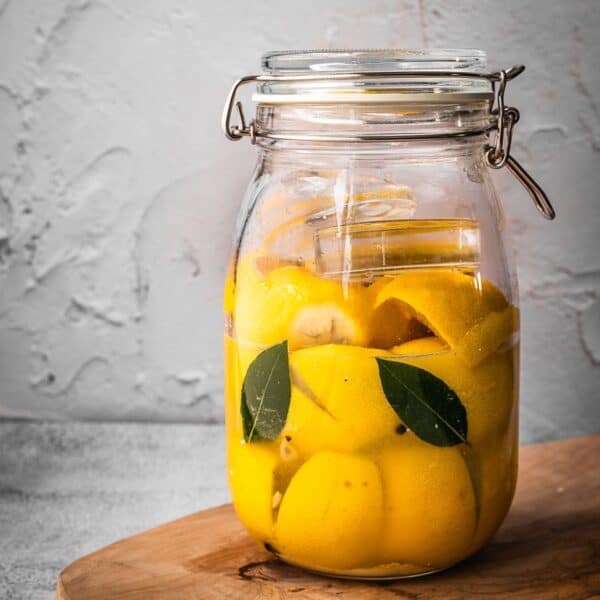
Equipment
- 1 Quart mason jar or glass jar with well-sealing lid
- Muddler, tamper or wooden spoon
Ingredients
- 7-10 Fresh lemons
- ¼-½ cups Kosher salt, sea salt or pickling salt
- 2 Bay leaves
- ½ tsp Black peppercorns
Instructions
- Trim the ends. Using a sharp knife, trim both ends of the cleaned lemons.
- Cut the lemons. Cut an X in each lemon without going all the way through.
- Salt the lemons. Add about 1-2 teaspoons of salt to each lemon, making sure to rub the salt in the opening.
- Pack the jar. To a clean jar, add 2 teaspoons of salt and spices if using. Start packing the salted lemons in the bottom of the jar, trying to use up as much space as possible. Work in layers if you can and add the remaining lemons.
- Tamp down. Using a wooden spoon or tamper, press the lemons down to release some of the juice.
- Ferment. Add more lemon juice to help submerge the lemons. Add one or two fermenting glass weights to help keep the lemons submerged. Seal the jar. Over the next few days, shake or flip the jar upside down to help the salt and juices distribute. You can flip the jar over twice daily for 5 days to help the salt distribute. Then leave the lemons to ferment for 3-4 weeks in a cool dark place in your kitchen. When you remember, give the jar a shake to help the lemons ferment evenly.
Video
Notes
- Lemons: When choosing lemons, use fresh, unblemished fruits. Organic regular lemons are preferred but not mandatory. If you have access to Meyer Lemons, use those!
- Salt: When fermenting, I recommend using sea salt, kosher salt or pickling salt. Don’t use table salt as it has iodine added to it.
- Spices: You don’t need to use spices. The choice is yours. I like using bay leaf and black peppercorns, but you can also use cinnamon sticks, coriander seeds or star anise. Choose complementary spices.
Nutrition
Nutrition information is automatically calculated, so should only be used as an approximation.
 Like this recipe? Rate & comment below!
Like this recipe? Rate & comment below!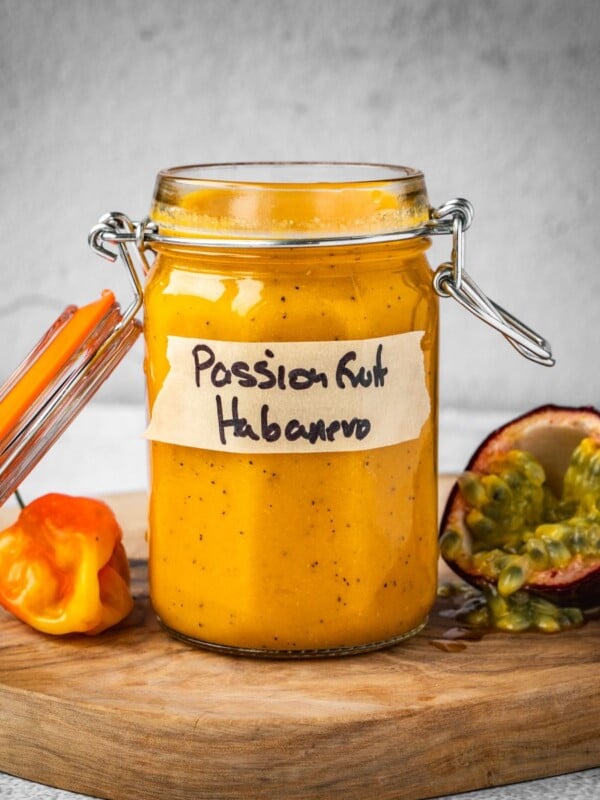
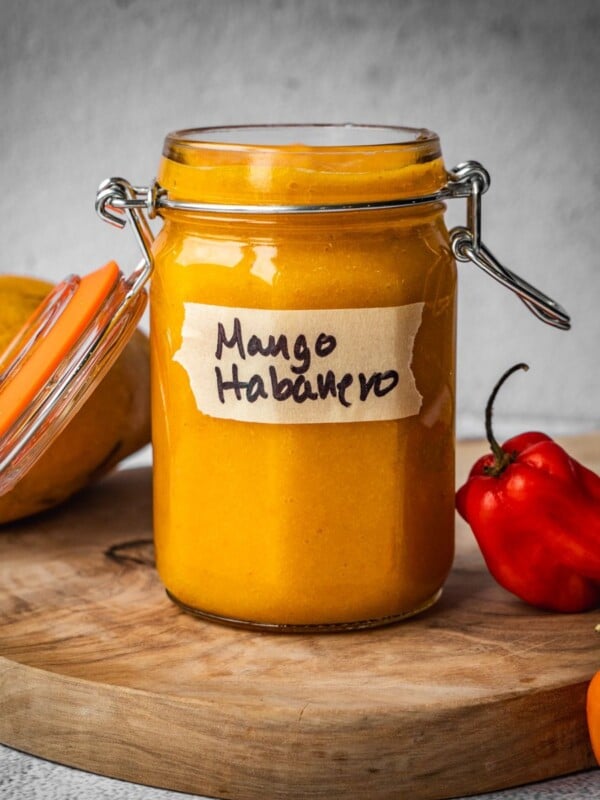
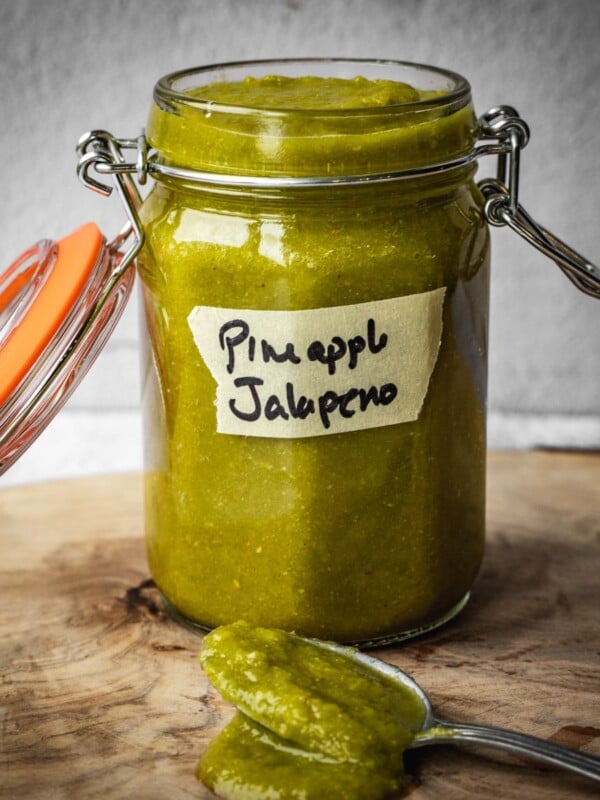
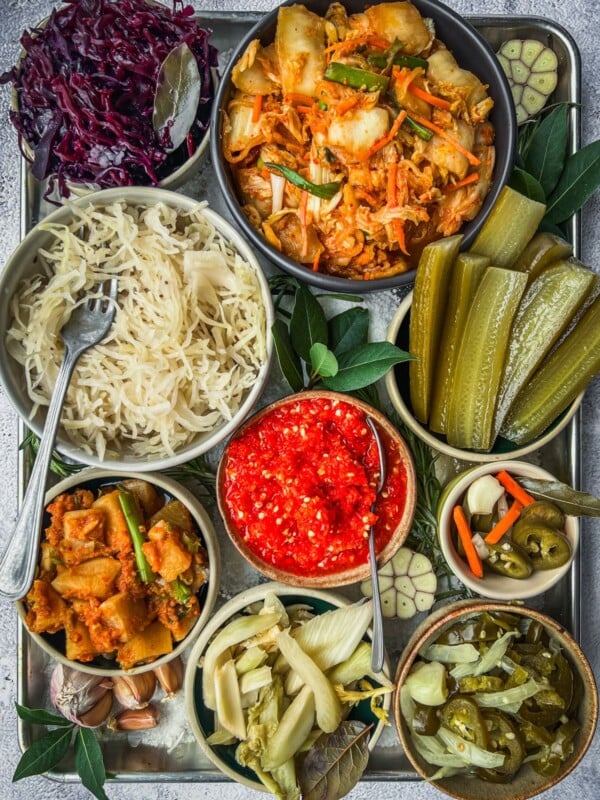

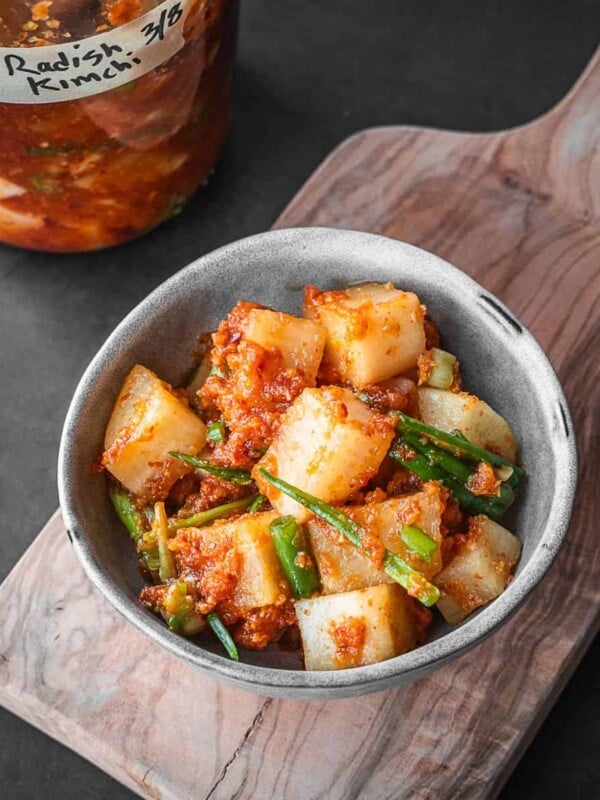
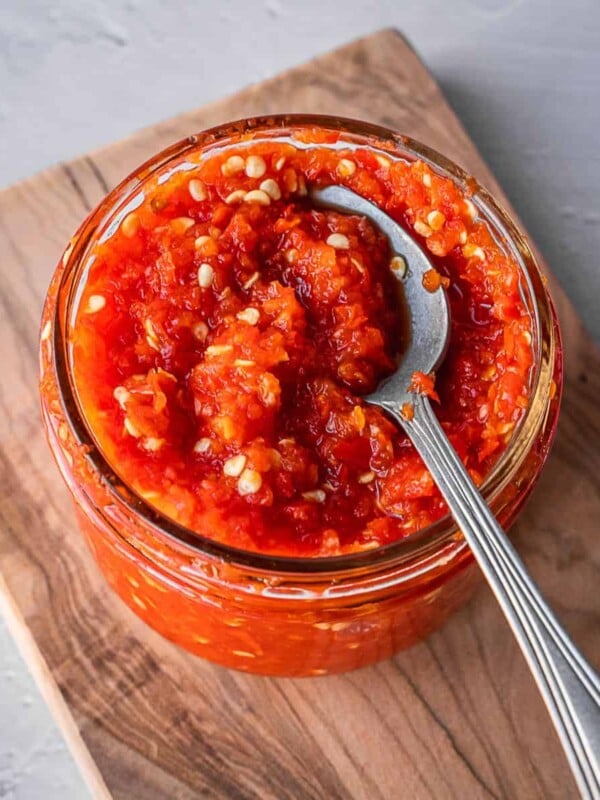
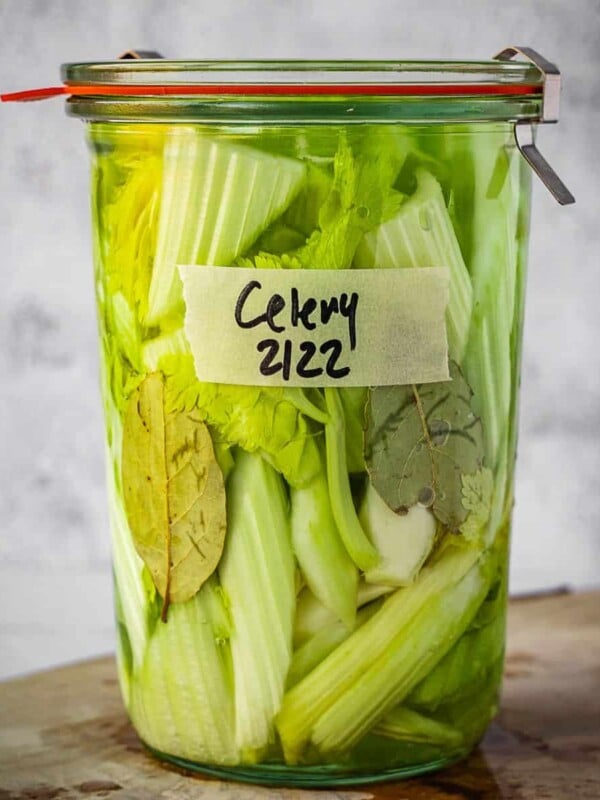








Hi, Thanks so much for the lovely recipe. I’ve actually tried to make lacto-fermented lemons several times but each time, mold develops and I can’t figure out why. I’ve even placed them in the fridge earlier than suggested, only to find mold growing again! I use only unwaxed, organic lemons and sea salt. I scrub the lemons well beforehand and place them on my fermenting shelf in my cupboard, so no sunlight reaches them. Since I do a fair amount of lacto-fermenting, I also scrub out my canning jars periodically with salt, and I always sterilize the jar beforehand with boiling water. I don’t have this problem with other foods I lacto-ferment (cabbage, beets, sauerruben, kim chi, etc.) which makes it all the more puzzling. I’ve just received a box of unwaxed, organic Meyer lemons and would so love to preserve them! Any idea what I might be doing wrong? Thanks so much for any suggestions you might have!
Hi Mimi. Are you sure that mold is developing? Sometimes cloudy brine occurs or you get kahm yeast. Kahm yeast is common in fermentation projects, though it has never formed for me when making preserved lemons. The only think I would suggest is to make sure your lemons are completely submerged in the lemon juice. You can use weights to keep them submerged and also add more fresh lemon juice to the jar when you start the ferment. Good luck.